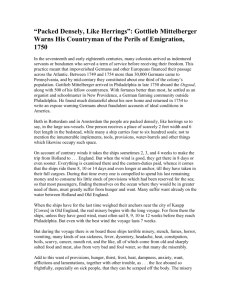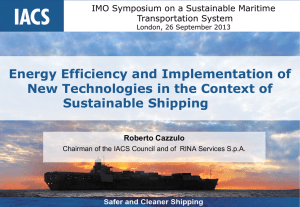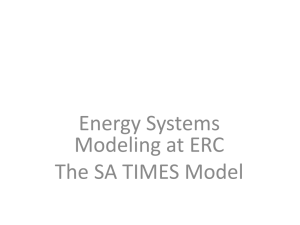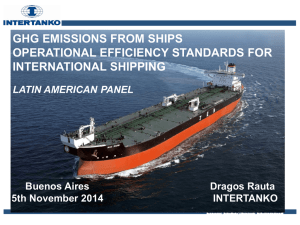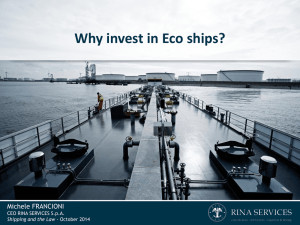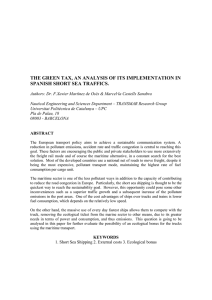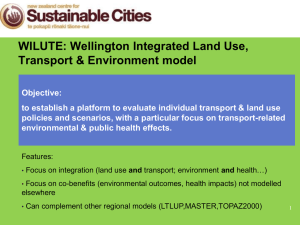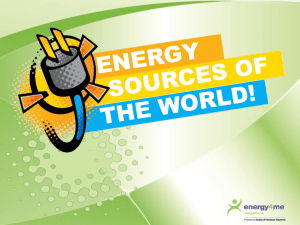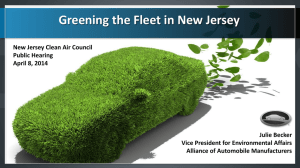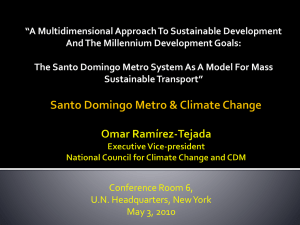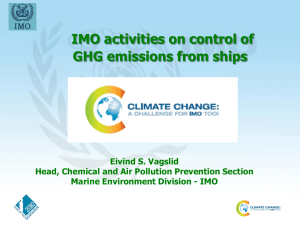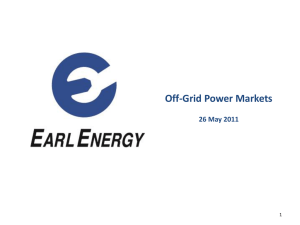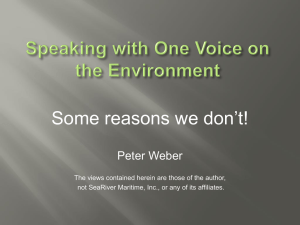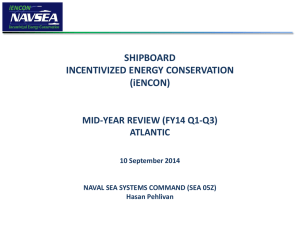EU proposal - Studio Legale Lauro
advertisement
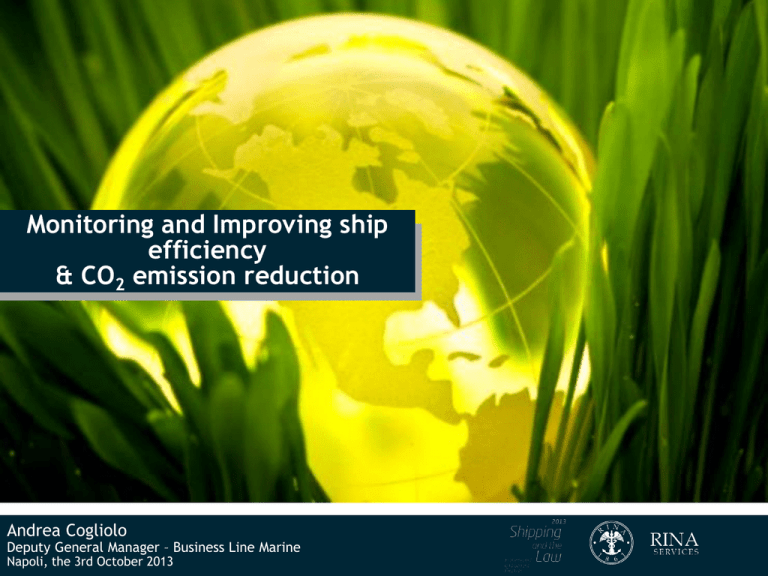
Monitoring and Improving ship efficiency & CO2 emission reduction Andrea Cogliolo Deputy General Manager – Business Line Marine Napoli, the 3rd October 2013 Monitoring and Improving ship efficiency & CO2 emission reduction Comparison of CO2 emissions by different transport modes However according to EU, GHG emissions from shipping is: Source: NTM (Swedish Network for Transport and the Environment) 4% of the EU GHG emissions expected to increase significantly in the future. EU Commission: MRV – the EU reasons EU-related emissions from shipping expected to increase further: by 51% by 2050 compared to 2010-levels by 86% by 2050 compared to 1990-levels despite the adoption of EEDI. Source: European Committee Document From the SEEMP to the EU proposal EU proposal Planned entry into force: 1 July 2015 to ensure that the Member States and relevant stakeholders have sufficient time to take the necessary measures for the effective application of this Regulation before the first reporting period starts on: 1 January 2018 EU proposal Application Ships above 5000 GT Emissions to be considered Emissions released during ships’ voyages from: the last port of call to a port under the jurisdiction of a Member State and from a port under the jurisdiction of a Member State to their next port of call as well as within ports under the jurisdiction of a Member State. Exclusions warships naval auxiliaries fish catching or processing ships wooden ships of a primitive build ships not propelled by mechanical means government ships used for non-commercial purposes. EU proposal Methods for monitoring and reporting greenhouse gas emissions and other climate relevant information: Bunker Fuel Delivery Note (BDN) and periodic stocktakes of fuel tanks Bunker fuel tank monitoring on board Flow meters for applicable combustion processes Direct emissions measurements. Regulations but also … savings & … A performance monitoring system on board is a way to be compliance with the present and forthcoming regulations (SEEMP, MRV) the most effective way to evaluate the efficiency of the fleet the starting point to decide, plan and evaluate possible refitting, maintenance or enhancing actions (re-blading, variable speed drive for pumps or ventilation, silicon paint) Efficiency & fuel saving! RINA proposal powered by IB software consulting RINA proposal Step by step approach - hardware A C C U R A C Y Issue Tool / Solution VOYAGE & FUEL DATA COLLECTION LINK TO AUTOMATION & NAVIGATION SYSTEMS PROPULSION EFFICIENCY TRIM OPTIMIZATION NON PROPULSIVE CONSUMPTION SPEED, TORQUE METERS, THRUST MEASURE, FLOW METERS HI-PRECISION INCLINOMETERS AMPEROMETERS, FLOW THERMOCOUPLES,… METERS, RINA proposal Step by step approach - per ship types Ship/Modules DC VF PE TO EM Container √ √ √ √ √ Ferry/Ro-Ro √ √ √ √ √ Cruise √ √ √ √ Bulk √ √ √ √ Tanker √ √ √ √ √ The √ points out which module are important with reference to ship type DSS √ The window allows to monitor Data Collector operation providing information on actual data received from ship automation, navigation and ad hoc sensors. Trim Optimization operational dashboard Flash on the EU Directive 2010/65 DIRECTIVE 2010/65/EU OF THE EUROPEAN PARLIAMENT AND OF THE COUNCIL of 20 October 2010 on reporting formalities for ships arriving in and/or departing from ports of the Member States and repealing Directive 2002/6/EC Article 5 Electronic transmission of data 1. Member States shall accept the fulfillment of reporting formalities in electronic format and their transmission via a single window as soon as possible and in any case no later than 1 June 2015. … omissis … Article 7 Information in FAL forms Member States shall accept FAL forms for the fulfillment of reporting formalities. Member States may accept that information required in accordance with a legal act of the Union is provided in a paper format until 1 June 2015 only. Regulations but also … less paper work To conclude: ELB - Electronic Logbook VOYAGE planning and VOYAGE reporting (core of Deck Logbook). FUEL CYCLE MANAGEMENT: from supply to loading, to analytic consumption (Oil Rec Part I, Samples Analysis, SFOC/Emission in atmosphere…), both in Deck Logbook & Engine Logbook. MARPOL Reporting Voyage Reporting Nautical Journal Part III Daily noon log Weather report Speed and Distance report … Operations reporting SMS Reporting Radio Logbook (SOLAS Chap. IV Reg. 17) … Oil Record Part I (MARPOL Annex I): disposal, discharge, Tank cleaning, … Fuel Samples Analysis Garbage Lube oil Air emission Ballast … ELB is completely Paperless, as per EU 2010/65 Directive (Electronic Port Clearance), using Digital Signature and "Digital mark" of transactions. Thank you!!

